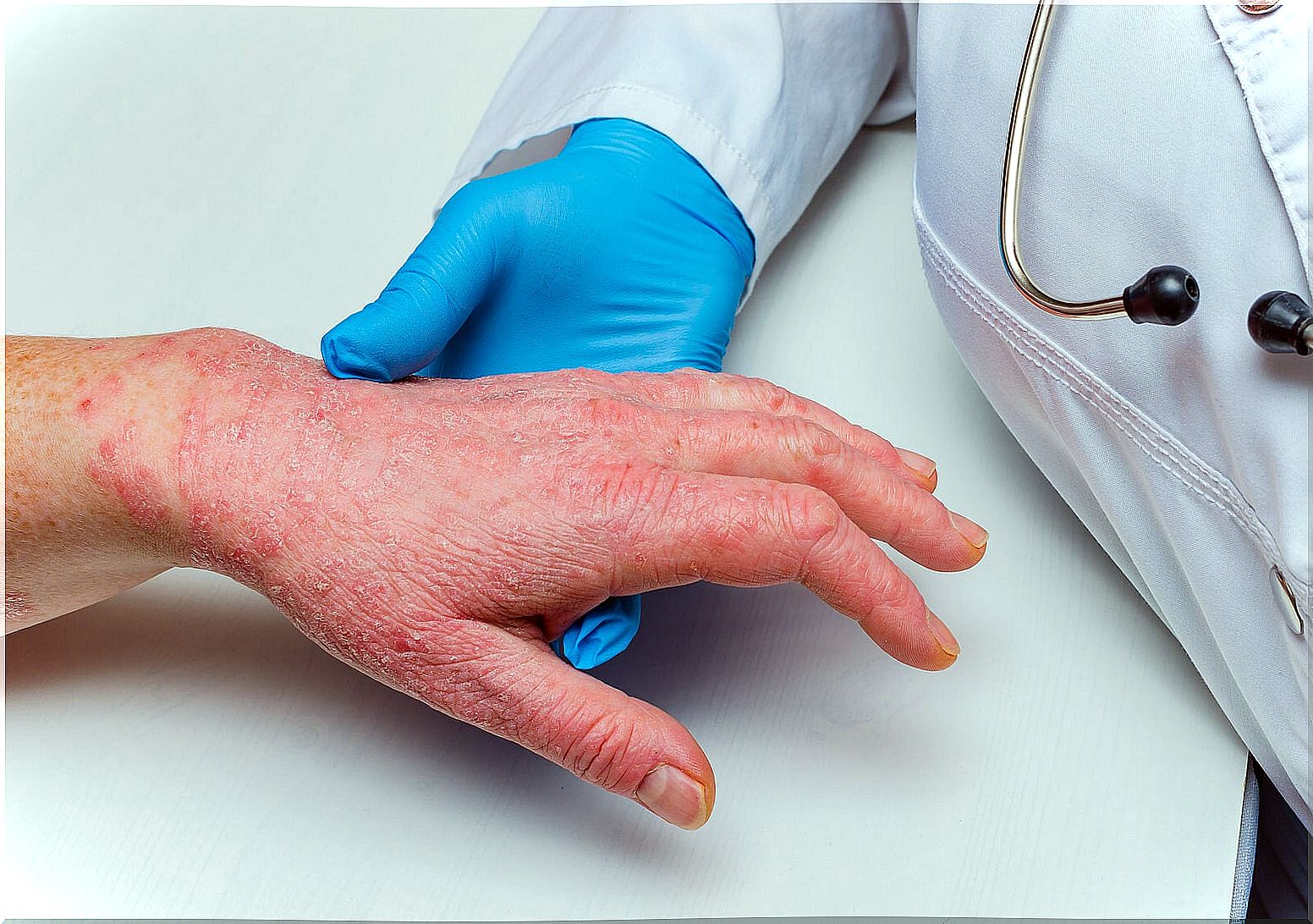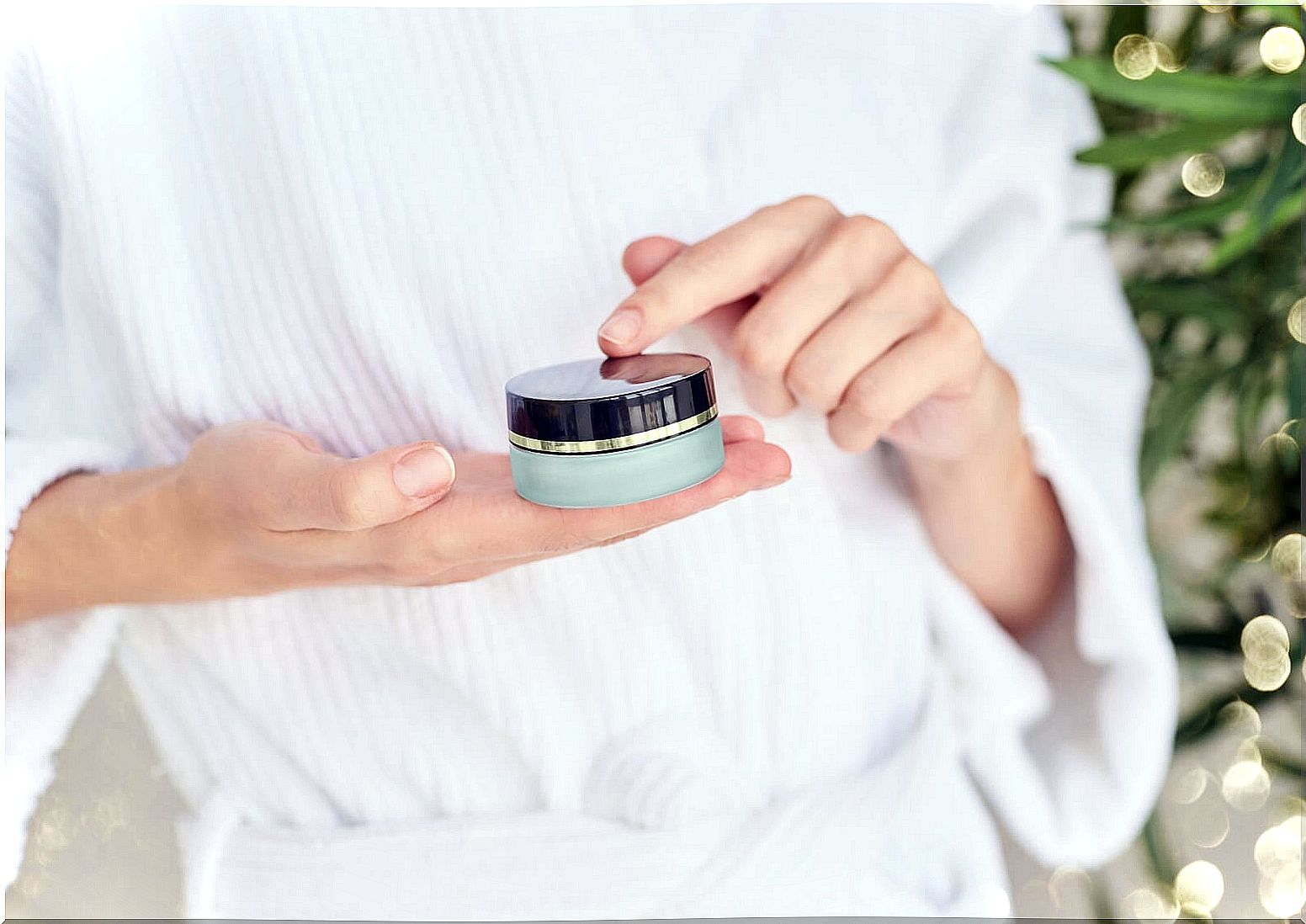Natural Treatment With Aloe Vera For Psoriasis
Currently there is no treatment that completely cures psoriasis. However, patients can access various therapeutic options to combat inflammation and the characteristic symptoms of this disease. In turn, there is evidence that suggests certain benefits of aloe vera for psoriasis.
Of course, natural remedies are not a first-line treatment for the disease, and they are not a substitute for prescription drugs. However, they can be taken into account as an adjunct to improve this condition. We tell you why aloe vera can help.
What is psoriasis?
Psoriasis is a chronic disease characterized by the appearance of reddish areas on the skin. These become inflamed and there is a striking flaking. It can appear on the elbows, knees, back, or even on the scalp. Coinciding with a publication in the International Journal of Molecular Sciences , we must know that:
- Psoriasis is not a contagious disease and its origin, in many cases, is genetic. It appears between 15 and 35 years of age, and the incidence rate among the population is between 1 and 3%.
- Psoriasis occurs due to a genetic alteration that causes skin cells to divide excessively. However, this has nothing to do with a cancerous process.
- The main problem with this dermatological disease is that it produces physical and psychological discomfort.
One aspect that we must take into account for psoriasis is that Factors such as weather, stress, endocrine problems and a poor diet can aggravate the disease . Therefore, they are elements that we should always control, as far as possible.

Aloe vera for psoriasis
The gel contained in aloe vera leaves has been used since ancient times as an adjunct to soothe the symptoms of various skin disorders. According to a review published in the Indian Journal of Dermatology , the plant contains elements such as:
- Aloin: It has an analgesic and soothing property.
- Emodin : Effective in fighting infections, and with the same effect as an aspirin.
- Aloetic acid: It has bactericidal action and neutralizes bacterial toxins.
- Chrysophanic acid: It is a derivative of emodin and is used in the pharmaceutical industry for skin diseases.
In addition, it is also a source of vitamins A (beta-carotene), C and E, enzymes and minerals such as calcium, chromium, copper, selenium, magnesium, manganese, potassium, sodium and zinc. Therefore, it is not surprising that, on the skin, it provides anti-aging and moisturizing effects.
Precisely, these last qualities are those that have been studied in relation to their effects on psoriasis. Thus, we find an investigation published in Tropical Medicine & International Health , which indicates that topical aloe vera extracts in a hydrophilic cream contribute to the relief of psoriasis more than placebo.
In addition, a series of reviews published in the Iranian Journal of Medical Sciences highlights that the plant has shown beneficial effects to retain moisture and skin integrity. For this reason, its topical use can have positive effects in the control of psoriasis symptoms. In any case, more research is still needed.
How to use aloe vera for psoriasis?

It is very important to always keep in mind that aloe vera gel is not an alternative treatment to the drugs prescribed by the doctor to control this disease. Therefore, first, you should go to a dermatology consultation.
If the professional agrees, we can take advantage of the properties of this plant to soothe symptoms and promote skin health. Although it can be purchased in commercial treatments, it is also valid to use it naturally.
How to use
To treat psoriasis and see significant results, we must apply the gel from the inside of the plant on our skin at least twice a day.
- Fill an ice bucket with aloe vera gel and allow it to freeze. Later, you can take a small piece and apply it to those specific areas.
The topical application of aloe vera seems to have positive effects on the skin, especially in the case of psoriasis. However, it is not yet considered a single treatment for the disease. Therefore, it is essential to consult a dermatologist and follow their recommendations.









